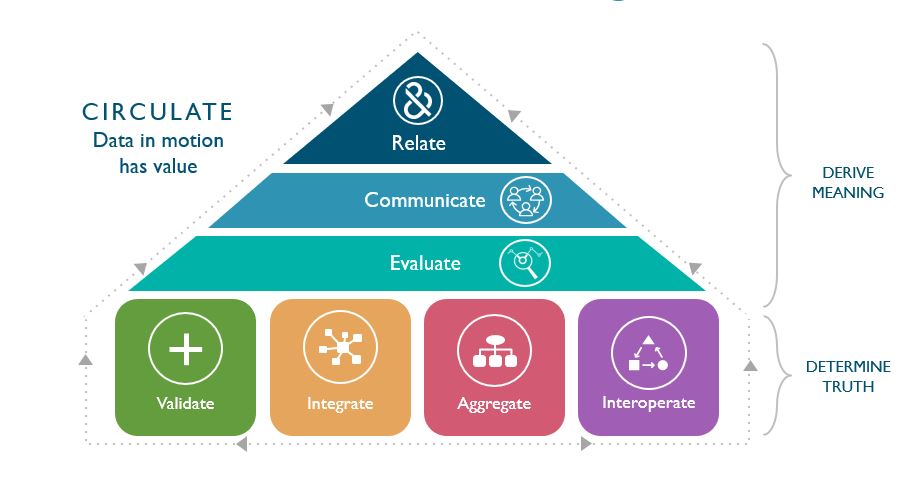
How to Create a Master Data Program
At a time when procurement and compliance professionals face more pressure to reduce inefficiencies, lower costs, and mitigate risk with limited resources, a mastery of data at the enterprise level is critical to get the job done.
Businesses manage high volumes of supplier, partner, and customer data every day, but they often have disconnected and highly siloed data. For example, many procurement management systems are primarily focused on onboarding suppliers and finding cost efficiencies, while compliance department systems are set up to ensure compliance with regulatory requirements. The lack of data cohesion hampers efforts to manage information consistently across the organization.
I recently spoke with my colleague, Vimal Vel, Global Head of Master Data Solutions at Dun & Bradstreet, to discover why it’s important for procurement and compliance executives to adopt a Master Data approach, how to create systems that will lead to enterprise-level workflows, the pitfalls some companies face, and advice for those starting out.
Q. What is the definition of Master Data?
Vimal Vel: Master Data is globally consistent entity information about customers, partners and vendors that is not use-case specific, according to Gartner. No matter what workflow, business department, or function, mastered data is structured information that is used to identify an entity by uniquely and unambiguously pinpointing the entity and then interacting with them the same way regardless of the required business workflow.
Typical examples of Master Data information would be a unique identifier, such as the Dun & Bradstreet D-U-N-S® Number, name, address, industry categorization, and basic firmographic attributes used to define that entity.
Q. What is the definition of Master Data?
Vel: Establishing a Master Data process provides a level of structure to data. That structure helps companies work with entities such as suppliers in a consistent way. It will also lead to connecting additional departments or functions as Master Data implementation expands, and that’s where you begin to find efficiencies. When the workflow requires multiple systems and departments across organizations, such as procurement, compliance, finance, and marketing, a Master Data program provides the foundation to execute on enterprise-wide workflows.
Let’s look at procurement and compliance, for example. Let’s say I define IBM as a supplier in my system using a Master Data approach. I then define the same company in my compliance systems with that same structure and identifier. Once I do so, I’m able to connect those two records and identify IBM the supplier as the same company that I’m evaluating for compliance. If I have a unified structure for Master Data across both departments, duplicative work such as assessing compliance in both the supply realm and compliance realm are eliminated.
Q. What is your recommendation for companies who are beginning to establish a Master Data program?
Vel: Structure and connectivity are core components in how to establish a Master Data program, along with processes and governance programs around them. First, start with a process around mastering information. In parallel, establish the processes and governance models that will let companies take advantage of Master Data. In terms of mastering supplier information, start by assigning a unique identifier to each entity. Dun & Bradstreet’s D-U-N-S Number can be used for that purpose, since it is unique to each company record in our Data Cloud, but any unique identifier will work. D‑U‑N‑S is an acronym for Data Universal Numbering System, in which we assign a unique identifier number to established business entities. The D‑U‑N‑S Number enables our company to maintain and ensure up-to-date information on more than 300 million business records globally. Basic firmographic information is attached to that record, whether it is part of internal records or it is information obtained through third-party, premastered content.
Now the same thing can be applied in the compliance process. Both compliance and procurement systems’ records have the same Master Data, so there is established connectivity across systems, and it helps ensure compliance.
Q. What motivates businesses to create a Master Data structure in the first place?
Vel: When companies are looking for a new supplier, they want to make sure the one they identify isn’t already a supplier. Time is wasted when companies duplicate the process. If a company uses the D-U-N-S Number to identify that supplier and also uses it as a way to onboard every new supplier, then it would be flagged as a duplicate supplier record.
The second motivation comes from the fact that if a supplier is a subsidiary of an existing supplier, a normal process of onboarding would not enable companies to identify that. With a Master Data program, identifying entities and establishing connectivity across a business hierarchy can also help companies better assess aggregate spend with that supplier family versus total spend by a single supplier. It gives procurement teams the ability to negotiate better and more effective terms. The same thing holds true for supplier risk.
Knowing that a subsidiary or a parent of a supplier is on a restricted entity list changes how they are handled. Identity management and corporate hierarchy management – two foundational components of Master Data – are critical both in terms of supplier onboarding programs and the hierarchy management around aggregate risk and aggregate spend assessment with a supplier family.
Q. In your conversations with prospects and customers, is there any hesitancy to institute a Master Data approach?
Vel: There is a general reluctance for companies to embrace things like master data management programs. MDM programs tend to be large software implementations with enterprise-wide governance rules and methodologies, and also tend to be longer-term projects than what we recommend for a Master Data program.
Master Data – and Master Data programs – are not the same as MDM. Companies need Master Data whether they have an MDM program or not. The process of establishing a customer master or a vendor master only requires a Master Data program or initiative, rather than the full-blown governance and software management. The risk of doing business with someone who is connected with a restricted entity is a significant incentive for companies to adopt a Master Data program. If the organization has a vendor master and has the right hierarchy models defined around that master, they have the ability to quickly recognize that the entity is part of a family that might be on a restricted entity list, ultimately mitigating risk.
Q. Does creating a Master Data structure tend to begin in one area of the business and then expand from there to permeate other departments?
Vel: Yes, absolutely. The best way to get rid of departmental silos is to focus on silo number one first. If an organization goes through the process of mastering information across each of the silos one at a time, the advantage from a data standpoint is an established data model by which enterprise departments can now communicate with each other.
Q. Is there a step-by-step process you recommend?
Vel: We have a visual framework for Master Data. First, an organization needs to provide structure to the data, going through the process of assigning a unique identifier and basic firmographic attributes to all third-parties. So, let’s say this has been done in silo number one, which happens to be the procurement department. Now they go through the compliance department data and do the same thing in order to integrate the data. Having a unique identifier and a common data structure facilitates connecting information across the two departments. By tackling one silo at a time, the process is less overwhelming and the benefits of sharing common data across departmental functions still continue to accrue.

Next is the aggregation of data to glean important information such as top markets and top accounts. After aggregation comes interoperation, the step in which companies begin sharing data seamlessly across processes. Validate, integrate, aggregate and interoperate provide a foundation to begin to derive meaning from data.
When you look at connectivity through corporate hierarchy, efficiencies begin to emerge. Let’s say I do business with Cognos Corp., which supplies me with business intelligence tools. Now, I happen to have done a compliance check with IBM, so in my compliance systems, I only have a reference to IBM. Recognizing that Cognos is a subsidiary of IBM helps me establish connectivity between the procurement department and the compliance department, and the workflow operates effectively. In this case, because Cognos is a subsidiary of an established supplier who’s already been checked and validated, I can now expedite the screening process.
Q. What are the challenges inherent in implementing Master Data?
Vel: The typical challenges are in establishing or defining the enterprise workflow. It does require commitment and agreement on the workflow among colleagues, and it can take time to reach consensus on the approach.
We’ve created a Master Data maturity self-assessment for customers. They go through the assessment to determine how ready they are to master and manage data. If we find a company is low on the maturity level, they will have more work to do around mastering data. If they’re high, that means they have sophisticated, proactive processes already in place around mastering data. Customers at lower levels of Master Data maturity have a harder time establishing enterprise workflows and Master Data programs. We work with customers to help them improve their maturity level one step at a time. Knowing where they are today is often the company’s first step. Our recommended approach to businesses is: Assess readiness level, understand where there are gaps, and make that part of the strategy and timetable. Sometimes low-maturity organizations try to take on major Master Data programs that span the enterprise right out of the gate, but we recommend starting in one part of the business and then adapting and adjusting the plan gradually.
Q. What are the key benefits of instituting a Master Data approach?
Vel: The benefit for procurement professionals is the ability to better negotiate with suppliers. Identifying each entity and having an aggregate view of the supplier family helps supply managers understand how much business they’re doing with that family as a whole and – as a result – helps them negotiate the most favorable terms with the entity rather than doing business with a standalone division. That creates value and can lower costs.

An aggregate, comprehensive view of suppliers, partners, and customers will help companies avoid risk.
Duplicate business workflows also create inefficiencies because companies wind up recreating effort and process in each silo within the organization, rather than developing a process once and sharing the information across departments. Risk avoidance is another benefit. An aggregate, comprehensive view of suppliers, partners and customers – including Tier N relationships – will help companies avoid risk.
The lack of data cohesion that exists within many organizations will continue to slow growth and impede the ability to make the most of company resources.
As Vimal mentioned, managing information consistently across the organization can reap multiple benefits, such as negotiating better terms with suppliers, avoiding duplicative efforts, and expediting the process of onboarding and screening. Mastering procurement and compliance data now can set the stage for an enterprise-wide Master Data strategy.
Learn more about how procurement teams can take the lead to effectively manage Master Data.


